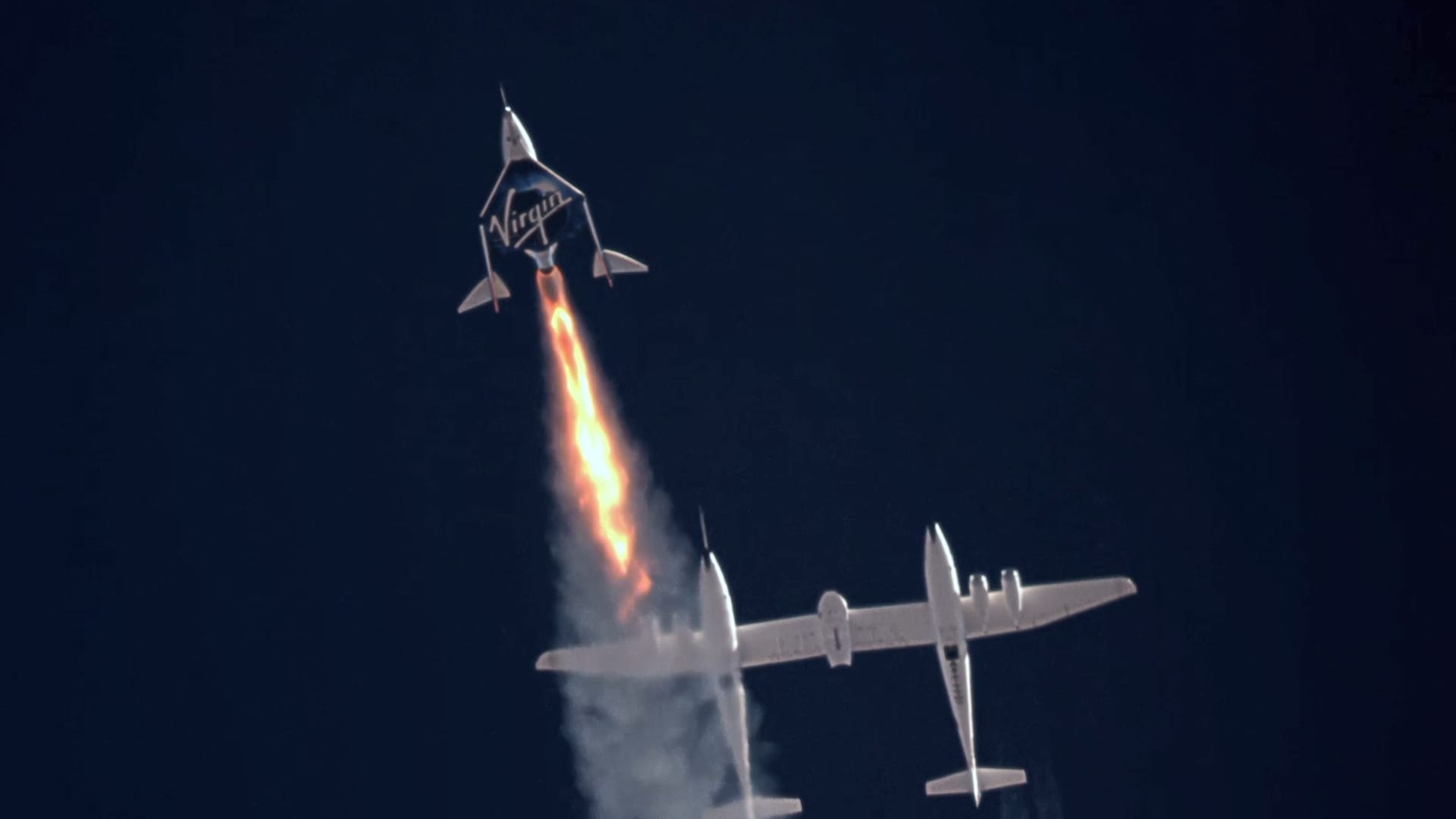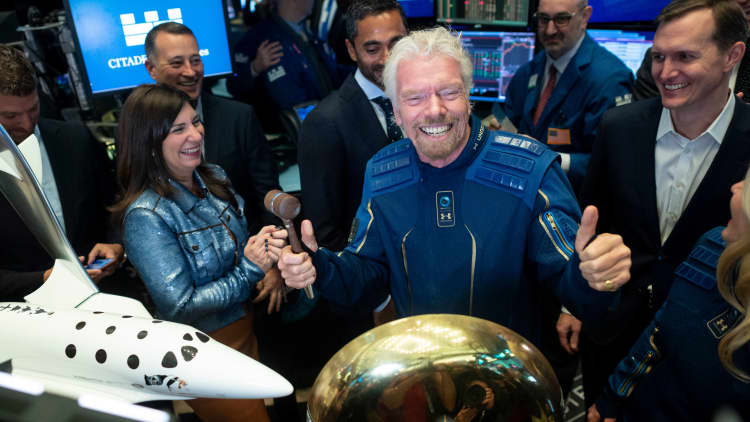
Carrier aircraft VMS Eve is seen in the background shortly after releasing VSS Unity, which is firing its engine and acclerating during the company’s fourth spaceflight test, Unity 22, carrying founder Richard Branson on July 11, 2021.
Virgin Galactic
Virgin Galactic is targeting as early as May 25 for the launch of its next spaceflight, which marks both its first in nearly two years since flying founder Sir Richard Branson and its planned last step before beginning commercial service.
Called Unity 25, the mission represents the company’s fifth spaceflight to date, launching out of Spaceport America in New Mexico. It is a “final assessment” flight, with six Virgin Galactic employees onboard for a short trip to the edge of space.
The update comes after a longer-than-expected refurbishment period for the company’s spacecraft: A couple months after Branson’s flight, and following an FAA investigation into a mishap during his trip, the company paused operations for what was intended to be an “eight to 10 months” process – but ended up taking nearly 16 months instead.
Shares of Virgin Galactic rose about 5% in premarket trading Wednesday following the announcement. The company reported first-quarter results earlier this month that revealed widening losses as it funds development and expansion of its spacecraft fleet.
Sign up here to receive weekly editions of CNBC’s Investing in Space newsletter.
In-house pilots Mike Masucci and CJ Sturckow will fly spacecraft VSS Unity, while Jameel Janjua and Nicola Pecile will fly carrier aircraft VMS Eve. In the passenger cabin will be Chief Astronaut Instructor Beth Moses, as well as astronaut instructor Luke Mays, senior engineering manager Christopher Huie, and senior manager of internal communications Jamila Gilbert.
Virgin Galactic’s approach to space tourism is to fly up to an altitude of about 40,000 feet, release the spacecraft and fire its engine to climb past 80 kilometers (or about 262,000 feet) – the altitude the U.S. recognizes as the boundary of space.
Known as sub-orbital, this type of spaceflight gives passengers a couple minutes of weightless, unlike the much longer, more difficult, and more expensive orbital flights conducted by Elon Musk’s SpaceX. After flying on his own craft in 2021, Branson told CNBC he hopes to fly with SpaceX.
Depending on the outcome and data gathered from Unity 25, the company aims to fly its first commercial mission in “late June.”








